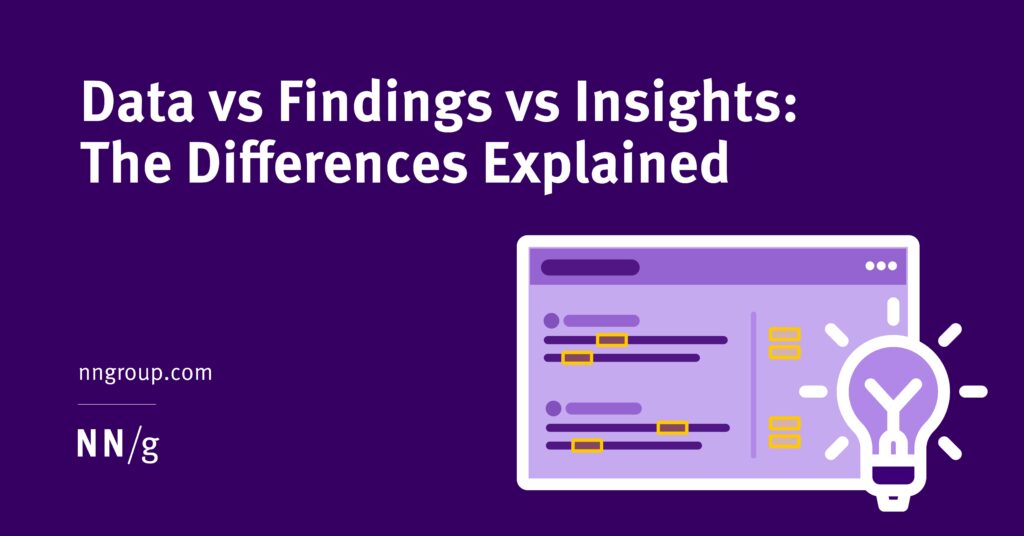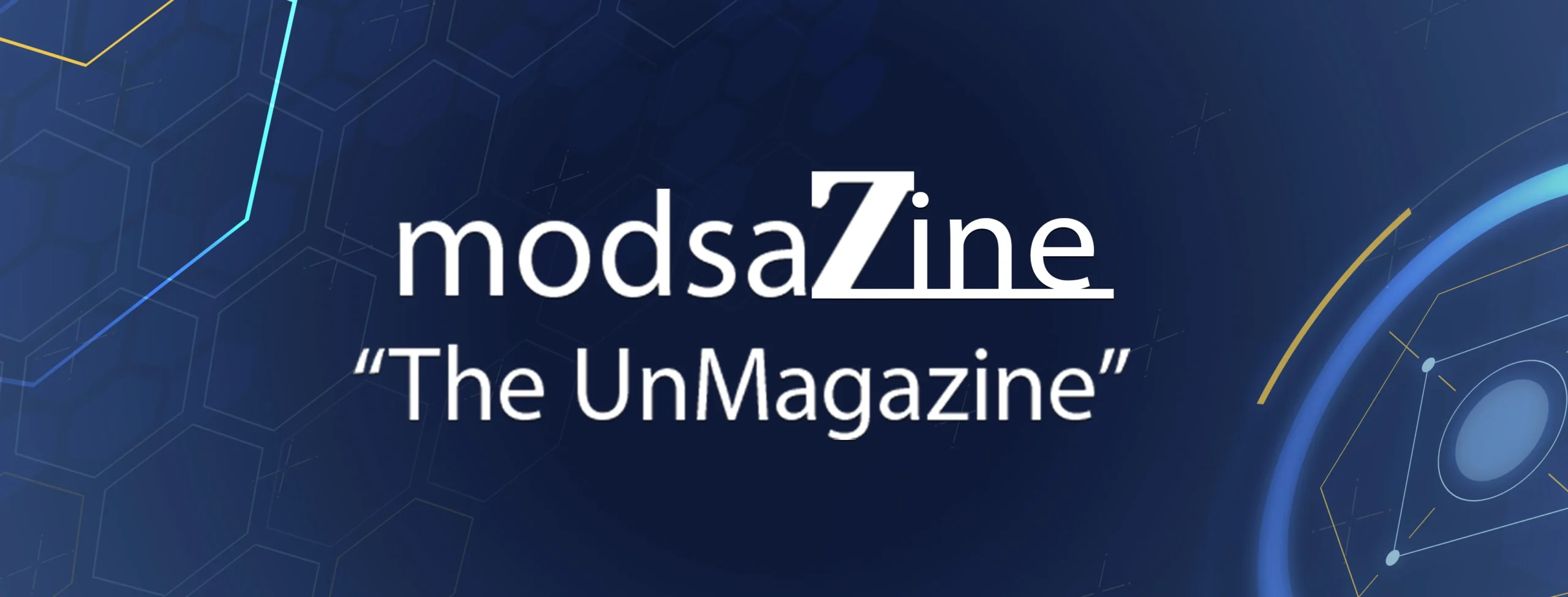A shared vocabulary and understanding of data, findings, and insights will enable you to communicate where you are relative to where you need to be in your research analysis.
Data are simply a collection of data points which lack significance individually. As soon as researchers start to do any level of analysis on these data points, we have information. The type of information we have depends on the level of analysis completed. The first level of analysis yields findings, which are patterns among a specific set of data points that still lack critical context. The final level of analysis yields insights, which explain observed patterns and identify actionable opportunities. Insights are what researchers should strive to create.
Raw Data Lacks Context
Definition: Data refers to an unanalyzed collection of observations about users that may include transcripts, notes, metrics, or survey output.
Data is comprised of single-observation points, otherwise known as data points. The data points are anything that gets captured — for example, user quotes or clicks in a user-testing session. There is no analysis or synthesis that happens at this stage, so no conclusions can be drawn.
Take, for instance, capturing data from a survey. The answers selected by participants would be the data points. If one question in the survey asked participants how likely they are to recommend the system to someone else, a single data point would represent the single response from a respondent for that question. The data would represent the collective responses from all respondents for all questions in the survey.
Data can be quantitative or qualitative. User quotes or behaviors are qualitative data. But task time, success, analytics metrics, or responses to certain survey questions like the net- promoter–score (NPS) question above are quantitative.
Findings = What Happened, Not Why
Definition: Findings describe patterns in collected data or summaries across it. They lack consideration of background, past research, and organizational factors.
To come up with findings, researchers take the many distinct data points they collected and examine them for patterns. For qualitative data, they rely on thematic-analysis techniques. Quantitative data is analyzed through statistics.
To extract findings, we look across everything captured, but we can look for patterns only across comparable things. In the survey example above, we could look at all the answers to the NPS question and find that the NPS score is 40, with a margin of error of 10. This is a summary of several data points, so it is a finding. However, there is no context that tells us details, such as whether this score is good and the reason behind this score. Thus, findings are not that useful by themselves.
Context is required to be able to interpret a finding. With findings alone, researchers are not able to determine why a pattern was observed or to make recommendations that are right for users and the business.
Insights = Opportunities to the Business
Definition: Insights are focused explanations of opportunities, based on other user research and business context.
While findings describe what is observed in the scope of a particular study or time frame of a live product, insights tie specific opportunities to specific user needs and they relate to valuable business objectives. Interpreting findings in context yields insights.
In the case of the NPS question above, consider these additional three pieces of context:
- This question was administered to users of a recently redesigned medical-appointment–booking site. The organization redesigned the website to decrease support call costs resulting from users who struggled to book appointments with specialist providers.
- Before the redesign, the NPS score was 35, with a margin of error of 15.
- Subsequent qualitative usability testing of the redesigned interface revealed that users struggled with it due to weak information scent and medical jargon.
Given this context, here is a potential insight:
Even though the NPS score increased, this difference was not statistically significant compared with the NPS for the older design. (If you were to plot confidence intervals for the two metrics, you would see that the one for the original NPS includes the one for the NPS of the redesign). Users struggled to understand the terminology used on the site and had a hard time identifying the correct specialist for their condition. The recommendation is to use plain language to align with users’ existent mental models.
This insight marries the finding around the NPS score with a usability finding that adds important context and highlights a clear opportunity connected to one of the organization’s goals.
Researchers should strategically use insights as a tool to connect their research to recommendations and opportunities. Insights are not meant to be prescriptive; rather, they narrow design possibilities, which can then be tested to find the best one. There are an infinitely many number of design possibilities for any problem, so some initial direction is highly beneficial for efficiency.
How to Mitigate Bias in Insights
Given that the researcher designs the study, facilitates it, analyzes it, and interprets the data, there is inevitably some bias inherent to an insight. The threat posed by bias can be mitigated through the process of triangulation, which means relying on multiple sources of data, multiple approaches to analyzing the data, and multiple researchers doing the analysis, to reduce the chance that one particular researcher’s bias results in a faulty assessment.
Concerns around lack of scientific statistical significance and validity are common, but practically speaking, it is wise to make some recommendation that could have a positive business impact, rather than making no recommendation at all.
Conclusion
Data, findings, and insights are the language we use to communicate significantly different degrees of research analysis that your team as completed. For example, if you are currently working with findings, then you need to develop your analysis further to insights, because you can’t make decisions without understanding context.


